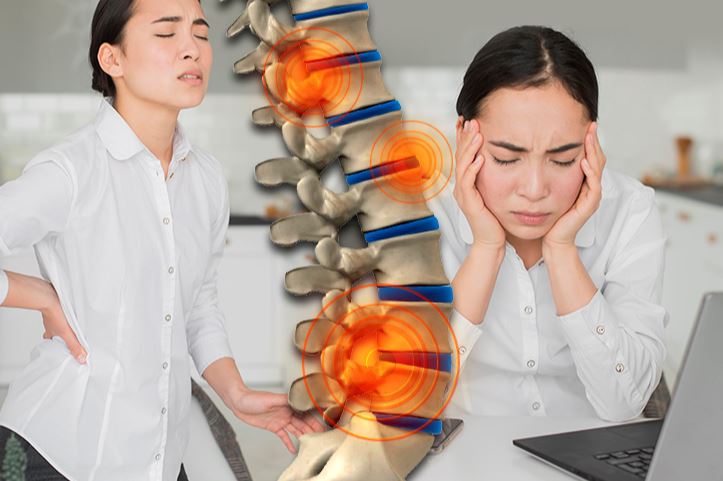Few people have an adequate workspace at home. Bad postures affect the spine.
After Covid-19 puts most of the population in preventive isolation, many people had to improvise small office spaces in their homes. Few houses have a conditioned space for a working day, even many of the offices, that are now empty, don’t have the proper structure. This situation can generate negative effects for workers’ backs.
According to the opinions of specialists, the bad postures that are taken by working on the sofa, at the dining table, or even in bed can have serious consequences for the health of the spine. According to the physiotherapist of the College of Physiotherapists of Catalonia, Clara Bergé, explains for El Clarín, that any position that is adopted and maintained for a long time is harmful to the body. For this reason, breaks during work should be mandatory as they are useful to relax the muscles and prevent pain.
By the way, Stephanie Mansour, wellness and health expert, commented on CNN for some tips for maintaining good posture while working at home:
-Try not to bend forward, as this affects the muscles, bones and joints.
-The best way to sit in front of a desk, is that the back and legs are at a 90 ° angle, that the knees and ankles are aligned and the feet are flat on the floor or on a footrest.
On the other hand, for the physiotherapist Ismael Martí, comments for El Clarín, that currently the advice for people who work sitting is more about how they should move, than how they should sit. Martí recommends taking 5 and 10 minutes breaks for every 50 or 60 minutes of work. Along with some moves that include:
-Lean on a fixed piece of furniture such as a table and lift your feet off the ground alternately to move joints such as knees, ankles and hips.
-Lift one arm over head, leaning to one side.
In addition, care must be taken that the computer screen is at the level of the line of sight to avoid cervical overload. Or use a pillow on the lower back to avoid lower back pain.
It’s advisable to relax with a little gentle physical exercise such as yoga or simple stretches and complement these activities with the use of simple orthopedic tools such as balls, rolls or more professional ones like Cordus or Sacrus to help relax the muscles at the end of the work day.
